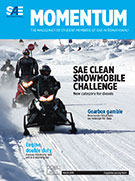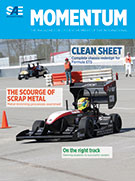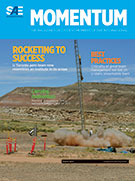Magazine

MOMENTUM: OCTOBER 2018
2018-10-01
Meeting the challenge The AutoDrive Challenge team from Texas A&M overcame its own challenged to place second in SAE's newest Collegiate Design Series competition. Record-breaker Penn State Behrend surpasses 3,0900 miles per gallon at SAE Supermileage competition. The measure of success An all-seniors team at LSU extended the school's string of strong performances in the 2018 SAE Aero Design West competition.









